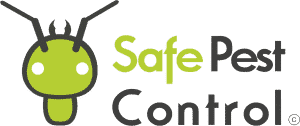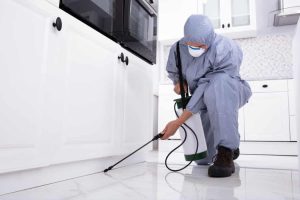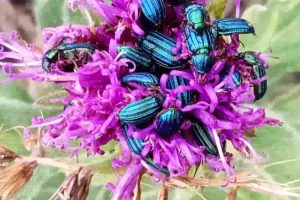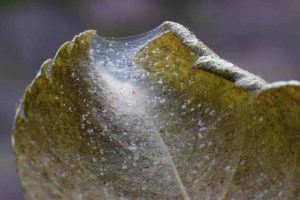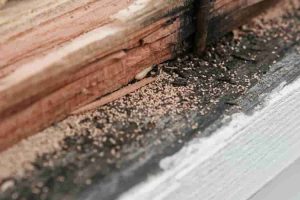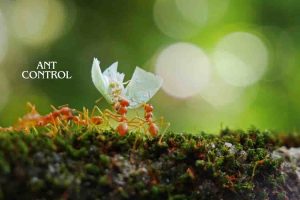Managing pest control in eco-friendly and green homes requires a shift towards non-toxic and sustainable methods. We need to prioritize natural solutions that safeguard both our homes and the environment. Using traps and pheromone-based controls, for example, allows us to target pests without resorting to harsh chemicals. Sticky traps, bait traps, and live traps can effectively manage pests like fruit flies and pantry moths.
Understanding the behavior of pests is key to effective and eco-friendly pest control. By focusing on prevention through non-chemical means, we can significantly reduce the environmental impact of our actions. Utilizing natural pest control methods not only protects our homes but also helps maintain the delicate balance of our ecosystem.
As we strive for sustainability, it’s vital that our pest control practices align with our eco-friendly values. Combining practical knowledge with environmentally friendly methods ensures that we can enjoy a pest-free home without compromising the health of our planet. Adopting these practices is a commitment to creating a greener, healthier world for all of us.
Understanding Eco-Friendly Pest Control
Eco-friendly pest control involves using natural and sustainable methods to manage pests. Our focus is on minimizing harm to the environment, health, and wildlife while promoting a green approach to pest management.
Principles of Eco-Friendly Pest Control
Eco-friendly pest control is built on several core principles. First, we prioritize the use of natural methods over chemical ones. This can involve traps, biological controls, and habitat modifications. For instance, we might use traps and pheromone-based control to capture pests without chemicals.
Secondly, prevention plays a crucial role. By removing food sources, sealing entry points, and maintaining cleanliness, we can keep pests from becoming a problem in the first place.
Lastly, we emphasize the importance of ongoing monitoring and maintenance. This helps us detect pest issues early and address them before they become major problems.
Benefits of Green Pest Management
Green pest control offers numerous benefits. Primarily, it reduces the risk of exposure to harmful chemicals. This is especially important in homes with children and pets, as well as for protecting our health.
Additionally, eco-friendly methods are often more sustainable. They use resources more efficiently and minimize environmental damage. By using natural and non-toxic methods, we help create a healthier planet.
Economically, green pest management can be cost-effective in the long run. Preventative measures and natural deterrents often require a lower financial investment over time compared to repeated chemical treatments.
Assessing Environmental Impact
When adopting eco-friendly pest control, it’s important to assess the environmental impact of our methods. We must consider how each technique affects soil, water, air, and non-target species. Using natural and sustainable solutions helps minimize negative impacts on the environment.
Evaluating the lifecycle of pest control products is also critical. We prefer options that are biodegradable and have a low ecological footprint. Moreover, integrated pest management (IPM) is a valuable approach. It combines various methods to target pests effectively while reducing environmental harm.
Natural and Non-Toxic Solutions for Pest Management
In eco-friendly and green homes, using natural and non-toxic pest control methods is essential. We will explore various strategies that are safe for both the environment and our families, emphasizing essential oils, biological controls, and preventative measures.
Utilizing Essential Oils and Natural Ingredients
Essential oils such as peppermint, eucalyptus, and tea tree are powerful natural repellents. These oils can deter insects like mosquitoes and spiders. We can create sprays by mixing a few drops with water, which can be used around entry points or problem areas.
Neem oil is another effective natural pesticide. It disrupts the life cycle of pests, making it harder for them to reproduce. We can use it on plants to combat aphids and mites.
Diatomaceous earth is a non-toxic powder made from crushed fossilized remains. It can be sprinkled around the home to eliminate ants and other crawling insects by damaging their exoskeletons.
The Role of Biological Controls
Beneficial insects play a vital role in natural pest control. Ladybugs and lacewings feed on harmful pests like aphids. We can introduce these insects into our gardens to help maintain a balanced ecosystem.
Natural predators like birds and bats also help keep pest populations in check. Installing bird feeders and bat houses can attract these animals, offering a natural solution to pest control.
Biological control agents, such as parasitic wasps, target specific pest species without harming other organisms. These wasps can be released to control pests like caterpillars in a natural, non-toxic way.
Importance of Prevention and Monitoring
Prevention is key to managing pests in a sustainable manner. By sealing cracks and gaps in our homes, we can prevent pests from entering. Caulking and weather stripping are effective methods.
Monitoring is equally important. Regular inspections help us identify potential problems before they escalate. Keeping our homes clean and free of clutter reduces hiding spots for pests.
Removing food and water sources is crucial. This includes cleaning up spills, fixing leaky faucets, and ensuring that pet food is not left out overnight. Simple steps like these can make a significant difference in managing pests naturally.
Implementing Integrated Pest Management (IPM)
Integrated Pest Management (IPM) combines various strategies to control pests in an eco-friendly way. By focusing on prevention, monitoring, and biological control methods, we can reduce the reliance on chemical pesticides and maintain a sustainable and healthy home environment.
Strategies for Prevention and Control
Preventing pest problems is essential in IPM. We start by making our homes less inviting to pests. Sealing cracks, fixing leaks, and storing food properly can keep pests out. Regular cleaning helps remove potential food and water sources.
If prevention isn’t enough, we use physical controls. Traps and barriers can effectively manage pests without chemicals. Sometimes, manual removal of pests like picking off caterpillars or squashing aphids works well. When physical methods aren’t enough, we may introduce natural predators, like ladybugs or parasitic wasps, to control pests.
Setting Thresholds and Monitoring
Before taking action, it’s important to determine acceptable pest levels, or thresholds. Not all pests need to be eliminated; we only act when pest levels threaten our health or damage our property. Monitoring is a key component in IPM.
Regular inspections help us identify early signs of pest activity. This proactive approach allows us to address problems before they get out of control. Using tools like sticky traps can help monitor pest populations. Keeping detailed records of pest activity and control measures taken can improve our IPM strategies over time.
Balancing Biological Control Methods
Biological control methods involve using natural enemies to manage pest populations. Ladybugs, predatory beetles, and parasitic wasps are effective at keeping pests in check. These beneficial insects can reduce the need for chemical pesticides and are safer for the environment.
Introducing these natural predators into our gardens or homes requires careful planning. We must ensure these beneficial insects have a suitable habitat and enough food to thrive. Balancing biological methods with other IPM strategies creates a sustainable solution to pest management.
Using integrated pest management, we can protect our homes in a way that is effective, proactive, and environmentally friendly.
Practical Eco-Friendly Measures at Home
To keep pests like ants, insects, and rodents at bay, we must adopt eco-friendly measures that are effective and safe. These methods include home solutions, improving sanitation, and sealing points of entry to ensure a pest-free environment.
Home Solutions and Repellents
Using natural repellents can help control pests without harming the environment. For example, garlic, lavender, and citronella are excellent for deterring insects. Placing bay leaves in pantry areas can help keep away cockroaches.
We can use sticky traps and bait traps to capture pests like flies and ants. Cinnamon is another useful repellent; sprinkling it near entry points can deter ants.
By utilizing these natural options, we minimize the need for chemical pesticides, which can be harmful to our families and pets.
Improving Sanitation and Waste Management
Good sanitation practices are fundamental to pest control. We should keep our kitchens clean and make sure food is stored properly. Regularly sweeping and mopping can prevent food crumbs from attracting pests.
Proper waste management is also crucial. We should dispose of garbage regularly and use bins with tight-fitting lids to reduce access for rodents and insects.
Fixing leaky taps and removing standing water prevents breeding grounds for pests like mosquitoes and flies. Keeping pet dishes clean and emptying birdbaths often will also contribute to a pest-free home.
Sealing Points of Entry and Habitats
Sealing cracks and crevices in the home can prevent pests from entering. We can use caulk to seal gaps around windows, doors, and baseboards. Even small cracks can be a gateway for pests like mice, which can squeeze through tiny spaces.
Reducing clutter around the house eliminates hiding spots for pests. Storing items in sealed containers and keeping our living spaces tidy helps reduce potential habitats for insects and rodents.
By taking these measures, we create a barrier that limits the opportunity for pests to invade and settle in our homes.
Implementing these eco-friendly practices helps us maintain a balanced ecosystem while keeping our homes safe and pest-free.
On-Time Service

5 STAR SERVICE BASED ON 100+ GOOGLE REVIEWS
PET & FAMILY FRIENDLY TREATMENT

ALL YEAR-ROUND PROTECTION
Take Back Control Now
8
REASON TO CHOOSE SAFE PEST CONTROL
- Guarantee protection all year-round
- 30 Years Collective Experience
- An impeccable reputation across Sydney's Suburbs
- Certified treatments & written Warranty On all work carried out
- Family Owned & Operated
- Rated #1 Pest Control In Sydney NSW
- No Mess, No Smell
- Family & Pet Friendly Treatments
REQUEST A QUOTE
